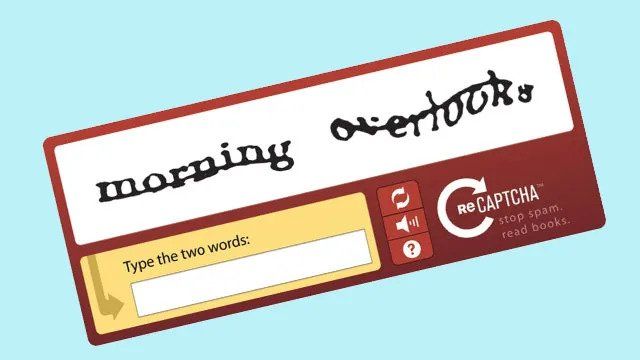
Filling out CAPTCHA puzzles is tedious, but using them as (imperfect) shields against malicious bots made sense, at least until now. Artificial intelligence can now defeat those puzzles every time, according to new research from ETH Zurich. CAPTCHA, an acronym for “Completely Automated Public Turing test to tell Computers and Humans Apart,” is employed across an enormous range of websites.
However, the tool may need renaming based on how well the AI model created by the Swiss researchers solved the security measure’s word and object identification puzzles.
The AI puzzle solver is built on a widely used AI model for processing pictures called You Only Look Once (YOLO). The scientists adjusted YOLO to take on Google‘s popular reCAPTCHAv2 version of CAPTCHA. You’ll immediately recognize reCAPTCAv2 from every time you’ve had to click on a car, bicycle, bridge, or traffic light to prove your humanity.
With 14,000 labeled photos of streets as training data and a little time, however, the scientists could teach YOLO to recognize the objects as well as any human. Exactly as well as a human, in fact, since the AI didn’t solve every puzzle perfectly the first time. But, you may recall how you get more than one chance, assuming you don’t totally mess up the puzzle. YOLO was able to perform well enough that even if it made an error in one puzzle, it would make up for it and succeed with another CAPTCHA puzzle.
Narrowing down the scope of objects users need to identify – often just 13 categories, such as traffic lights, buses, and bicycles – allowed for easier integration across websites.
However, this same focus on a narrow set of object types is what made it easier for the YOLO-based AI model to defeat the system. According to the ETH Zurich team, the system’s simplicity worked to the AI’s advantage, allowing it to master the image-based challenges without much difficulty. Despite attempts to make CAPTCHA more sophisticated by incorporating factors like mouse movement and browser history (known as device fingerprinting), the AI’s success rate remained intact.
The Rise of CAPTCHA-Solving AI
The fact that an AI system can now bypass CAPTCHA systems with a perfect success rate is a wake-up call for the cybersecurity community. CAPTCHA systems are a critical component of web security, designed to prevent bots from engaging in activities like spamming, creating fake accounts, or launching distributed denial-of-service (DDoS) attacks. If these systems are compromised, websites could become more vulnerable to automated attacks and other malicious activities.
The success of the YOLO model in cracking CAPTCHA systems is not an isolated case. In recent years, AI models have demonstrated increasing proficiency in tasks once thought to be exclusive to humans. Solving CAPTCHA puzzles is just the latest milestone in AI advancements that have reshaped expectations around machine learning and automated systems.
Implications for Everyday Users
For the average person, CAPTCHA puzzles are an everyday encounter, whether logging into an online account, submitting a form, or making an online purchase. The security of these interactions hinges on CAPTCHA’s ability to keep bots out. With this latest AI breakthrough, there’s a real risk that CAPTCHA may no longer serve its intended purpose as an effective gatekeeper.
One immediate concern is that if CAPTCHA systems become obsolete or easy for bots to bypass, it could result in an uptick in automated activities such as spam or malicious bot-driven campaigns. For instance, CAPTCHA systems are often employed to prevent bots from creating thousands of fake accounts or automatically posting spammy content across social media platforms. If bots can easily bypass CAPTCHA, it could lead to increased fraudulent activity across websites.
Additionally, as CAPTCHA technology is defeated, websites and service providers will be forced to explore more robust security mechanisms. Some alternatives being discussed include more sophisticated behavioral analysis techniques, such as tracking user interaction patterns, and biometric-based verification systems that rely on fingerprints or facial recognition.
Am I AI?
Proving that you’re not a robot isn’t as easy as it used to be, but that doesn’t mean you have to panic about being replaced any time soon. It’s simply evidence that cybersecurity needs to account for the rapidly evolving capabilities of AI models. CAPTCHA might end up phased out in favor of different puzzles to prove your humanity.
It would have to be more intensive than simply picking the right image. A security setup might have to monitor your behavior in solving a puzzle, like how fast and well you type and scroll. Or it might take a combination of multiple tests and verifications. In other words, cybersecurity will need to be stricter, though hopefully without slowing down web browsing too much. If things get really tough, perhaps we’ll all have to submit a tear after watching Mufasa die in The Lion King.
You might also like
Services Marketplace – Listings, Bookings & Reviews
